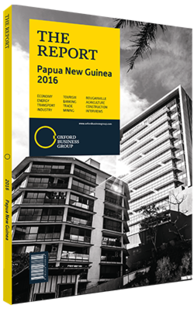OBG talks to Michael Johnston, President and CEO, Nautilus Minerals: Interview

Interview: Michael Johnston
Out of many potential locations, why did you choose the site off the coast of East New Britain?
MICHAEL JOHNSTON: The project is in cold and deep waters, in an area that shows high sedimentation rates. Volcanic activity occurring deeper in the ground propels high-temperature waters through the fault at the bottom of the sea and sets off a mineralisation process. These are well-known systems and the ones in Papua New Guinea were discovered in the late 1980s. This led to research funding from Japan and Australia. Above all, the country is naturally endowed with minerals; it has some of the largest and most spectacular gold and copper reserves in the world, along with other high-grade minerals. In terms of its regulatory framework, the Mining Act passed in 1992 is a tool that helped consolidate years of experience in the sector. At the time of the discovery of the Solwara 1 location, the legislation in PNG already permitted offshore exploration and mining.
What is your strategy for dealing with issues to do with the environment and land ownership?
JOHNSTON: The state has ownership of all minerals and hydrocarbon resources, but the land rights are just surface rights in PNG, therefore offshore mining does not necessarily face land ownership issues. However, there is a debate about whether ownership of the resources should go back to the landowners, and there are arguments both for and against it. Given the project is 30 km offshore and that the very deep drop on the western side makes it a poor biotope – which makes the whole area less reliant on fishing compared with other areas that are richer in nutrients – the environmental impact on the project side of the coast is low. Furthermore, it is located at a depth of 1.6 km, and the existing fishing areas go no further than 200 metres off the coast.
We are aware of our role and are working with the government to develop an offshore mineral policy which we consider to be a balanced piece of legislation, aimed at developing mining in frontier contexts where no infrastructure is found locally. An important part of this policy is to formalise the relations between the company and the provincial government, and to collaborate with the central government regarding possible ways of contributing to the local communities in New Ireland.
Why do you describe your project as groundbreaking and how does it fit in the PNG timeline?
JOHNSTON: This specific approach to underwater mining is innovative and the machinery is one of a kind; this will be the first time it is used. It is innovative in the sense that the cuttings from the seabed are contained and sucked out and not discarded in the water column, thus avoiding environmental damage.
As for the timing, metal prices started taking off in 2004 and we could see a 10% yearly increase due to higher demand for minerals from China and India. Over the years, technological advances have influenced the sector. Japan, Korea and China own a lot of ground on international waters and have been spending considerable amounts on sea-floor mining research. Many of them are building specialised machinery and are targeting 2018 to start operating, but they need more expertise in commercialising those ventures. Thus, regional actors are all exploring the sector’s potential, and PNG is a few steps ahead.
Facilities in Port Moresby have been relocating, thus opening up more areas and providing wider access. Infrastructure projects have been rolling out as an indicator of continuous growth. Residential projects and roads in the Highlands and East New Britain are being built. All this activity connects with a build-up to the 2017-18 period that will be crucial in putting PNG on the map. Landmark events such as the Pacific Games in 2015 or the upcoming APEC summit define cities for decades and change their dynamics forever.
You have reached the limit of premium articles you can view for free.
Choose from the options below to purchase print or digital editions of our Reports. You can also purchase a website subscription giving you unlimited access to all of our Reports online for 12 months.
If you have already purchased this Report or have a website subscription, please login to continue.

